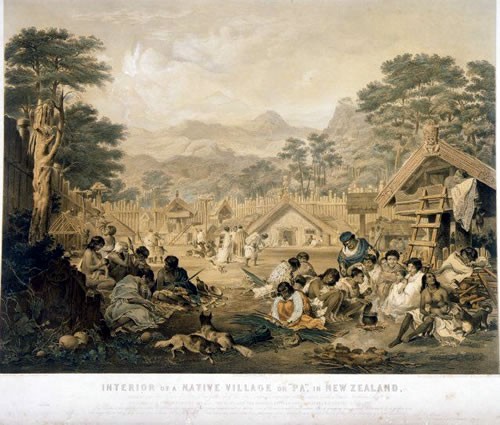
Pūtiki pā on the Whanganui River in 1850, based on a now-lost oil painting by John Alexander Gilfillan. In April 1847 six young upriver Māori attacked Gilfillan’s farm near Whanganui, killing his wife Mary and three of their children. Māori from Pūtiki played a key role in the capture of these men.
Pūtiki was the principal Māori settlement near the Whanganui River mouth, opposite the modern-day town. Māori from Pūtiki signed Edward Jerningham Wakefield’s deed of purchase for Whanganui, although prominent chiefs such as Te Ānaua later described the purchase as ‘of no significance’. The Church Missionary Society established a mission station next to the settlement and many of the pā’s leaders converted to Christianity. In the conflict that threatened Whanganui in 1847, and again in 1864, Pūtiki Māori fought alongside the Crown against Māori from the upper reaches of the Whanganui River.

Community contributions